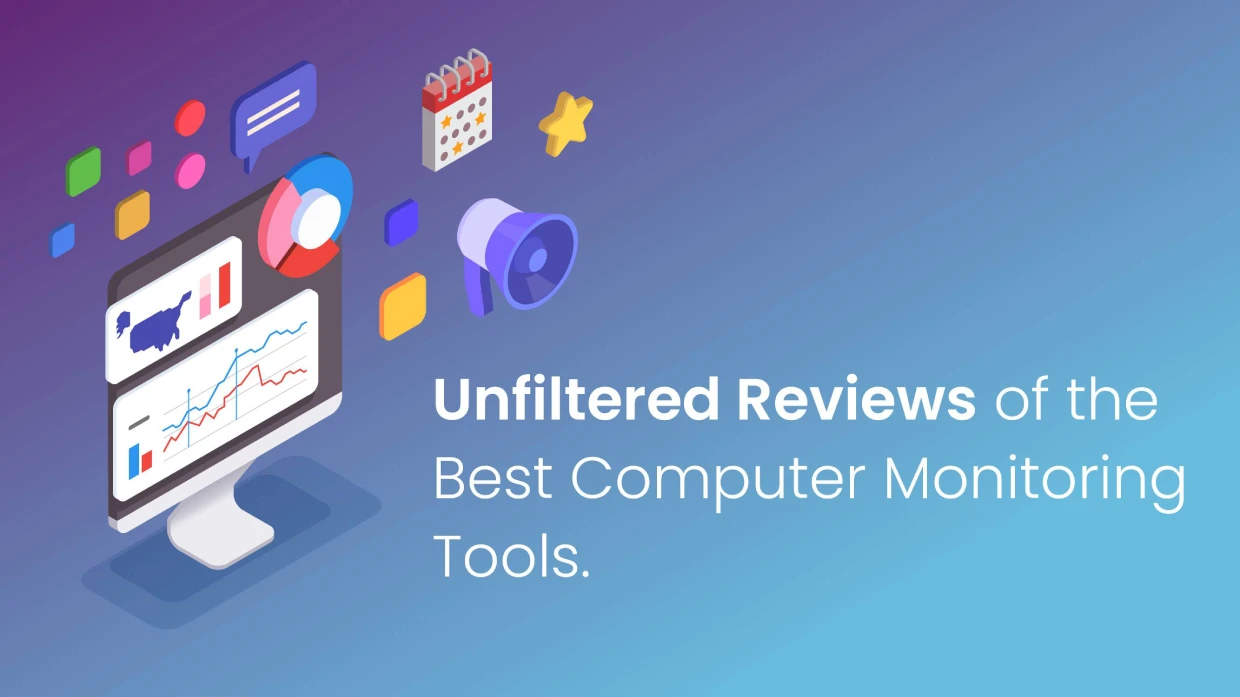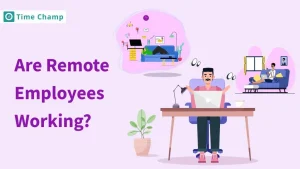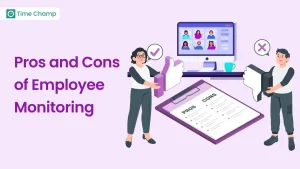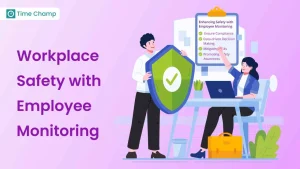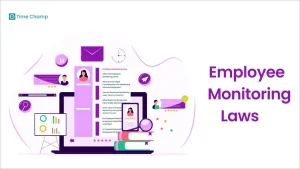As technology continues to play a significant role in today’s work environment, businesses are incorporating computer monitoring software to improve their productivity and ensure the integrity of their operations. However, what is computer monitoring and how can it help your organization? This blog explores the concept of computer monitoring, defining it, the areas where it is used, and some of the leading tools in the market.
What is Computer Monitoring?
Computer monitoring is a process of controlling and documenting the occurrences on a computer system. This procedure is usually deployed by employers to monitor, control, and assess employees’ computer usage, productivity, and adherence to the company’s policies. Computer monitoring aims at achieving the highest possible levels of operational efficiency and data security in an organization. Desktop monitoring is a wide array of tools and practices, which enable companies to have insight and control over the digital conduct of their labor force.
This may involve but is not limited to, monitoring websites and applications used by employees, tracking emails and messaging services, monitoring document access and modification, and even keystrokes recording or screenshots for security purposes.
The procedure usually includes the use of particular software installed on computers belonging to the organization. This software can work covertly, with different levels of disclosure on its presence and the information that is being collected, based on the requirements of the company’s policies and laws.
Common Things Employers Track on Employees’ Computers
Employers often monitor several aspects of computer usage, including:
1. Internet Usage:
- What is Monitored: This involves tracking the websites that employees visit during their work hours.
- Details Captured: The monitoring system logs the URLs of the websites, how much time an employee spends on each site, and sometimes even the frequency of visits.
- Purpose: The primary purpose is to ensure employees are not spending work time on non-work-related websites, which can be a major distraction and productivity drain.
2. Email Correspondence:
- What is Monitored: Incoming and outgoing emails are monitored by employers.
- Details Captured: This may include the addresses of the emails involved in the discussion, the body of the emails, any attachments that were sent or received, and the time and date of the emails.
- Purpose: Monitoring emails prevents confidential company information from being shared and ensures that employees use their email in line with the company’s policies.
3. Application Usage:
- What is Monitored: This element monitors the software or applications employees are using on their computers.
- Details Captured: It may comprise the names of the applications, the periods for which they are used, and sometimes the hours at which they are accessed.
- Purpose: This enables employers to determine the applications that are used for work and find out if there is any application usage that is not authorized or is not associated with work.
4. File Access:
- What is Monitored: This also entails monitoring the files that employees open, edit, or delete on their desktop computers.
- Details Captured: Information such as the file’s name, type, date of access, and any changes made to it.
- Purpose: File access monitoring is an important feature of data security as it prevents employees from illegally accessing, modifying, or deleting confidential data.
5. Keystrokes and Screenshots:
- What is Monitored: Some employers decide to take screenshots and record keystrokes (the keys pressed on the keyboard).
- Details Captured: Keystroke logging records every keystroke, whereas screenshots are visual still shots of what appears on the display at certain points in time.
- Purpose: This level of monitoring is typically for high-security spaces. It is used for detailed tracking of employee computer activities, and it can be used to analyze work patterns or investigate security incidents.
These monitoring aspects are focused on ensuring that employee computer monitoring software is using their work time wisely and responsibly, keeping productivity, and safeguarding company assets and information. On the one hand, employers must find a balance between monitoring and respecting employees’ privacy and the legal requirements concerning workplace monitoring.
How Does Computer Monitoring Work?
Computer monitoring incorporates several features such as:
Activity Logging:
- Function: Activity logging is the core function of computer monitoring. It covers the monitoring of all user actions performed on a computer.
- Details Captured: This also includes the applications used, the websites visited, the files accessed, and the emails sent or received.
- Purpose: The primary goal is to maintain a comprehensive computer usage log for the employee. Such data can serve to interpret employees’ work habits, assure adherence to corporate policies, and maintain security policies.
User Behavior Analytics (UBA):
- Function: UBA involves the analysis of the data collected from activity logging to find patterns and identify deviant or potentially problematic behaviour.
- Details Analyzed: This can include pinpointing abnormalities in the manner of work, such as logging into files at odd times, frequent trips to hazardous locations, or unusual email activity.
- Purpose: UBA helps enhance security by identifying possible insider threats, data breaches, or other security risks. It can also be used to understand the work ethic of the employees better and to identify areas where efficiency can be improved.
Real-time Alerts:
- Function: Real-time alerts are messages that are automatically sent to administrators or IT security professionals based on defined conditions.
- Details Analyzed: This is triggered by activities such as accessing restricted files, visiting blocked websites, or data transferring activities that go beyond normal limits.
- Purpose: Real-time alerts enable a quick response to potential security threats or policy violations, which minimizes the risk and ensures timely corrective measures
Productivity Tracking:
- Function: This feature focuses on measuring and quantifying employee productivity with the aid of their computer usage.
- Details Monitored: It includes time tracking of different activities, applications, and websites and sometimes setting standards of the expected outcome.
- Purpose: Productivity tracking is used to establish the pattern of productivity, to make decisions on managing the workforce, and to provide information for employee evaluations. It helps in the analysis of work time and in identifying areas to improve efficiency.
That is, computer monitoring consists of continuous data collection, analysis, and real-time feedback and alerts on risks and optimized productivity. These systems are important tools used by companies to safeguard their digital assets, ensure policy compliance, and promote a productive workplace.
5 Best Computer Monitoring Software
1. Time Champ
Time Champ is a leading provider of computer monitoring solutions, known for its comprehensive features and user-friendly interface. The field of employee computer monitoring software provides an extensive list of features that meet the needs of today’s dynamic workplace. Time Champ’s platform targets businesses that want to maximize the management of their remote workforce by improving productivity and operational effectiveness.
Key Features:
- Time Tracking: The service provided by Time Champ allows businesses to track the time spent by employees on various tasks and projects. Time Tracking provides a way of measuring productivity and ensures that work is done efficiently.
- Activity Monitoring: Real-time activity monitoring is implemented in the software and allows employers to find out which applications and websites their employees use while working. This helps in identifying non-productive activities and time wasters.
- Screenshots and Screen Recording: Time Champ periodically takes screenshots and screen recordings as visual evidence of employee work. This functionality provides transparency and accountability.
- Task Management: The software enables businesses to outsource tasks and projects to remote teams. Task management enables organizing the work, setting up priorities, and monitoring the results.
- Reporting and Analytics: Time Champ offers detailed reports and analytics on employees’ performance, project schedules, and dynamics of productivity.
- Idle Time Detection: The software detects idle time when employees are sitting for a long time without work, and it prompts them to resume work.
- Integrations: Integrations are the Synchronization of tasks and data enabled through the connection of Time Champ with various project management and collaboration software.
- Employee Productivity Scores: The software determines productivity ratings for employees based on work ethic and work performance. This allows a business to reward its best achievers and indicate what needs to be worked on.
- Remote Team Collaboration: The Time Champ’s Remote Team provides a unified chat and messaging function that enables remote and outsourced teams to communicate and work effectively.
Pricing Plans:
- Free Plan: Limited features.
Starter(1,800 RS/user): Automatic Attendance, Intensity Graphs, Time Claim, Offline Tracking, Auto Login/Logout, File Name Tracking and many more.
- Professional(2500 RS /user): Everything in Starter + Leaves, HR, Project Management, Document uploading, Screenshot Frequency 2 for 10 min, Blur Screenshots, Auto Start Desktop Timer, Deletion of User/Project, Leave Approvals, Silent/Invisible Tracking, Idle alerts and more.
- Enterprise(5000 RS/user): Everything in Professional + Real-time Status, Viewing Live Videos, Screenshots Delete, Phone Support, Dedicated Account Manager, Custom Roles.
Customer Ratings:
- G2: Rated 4.8/5 (77 reviews)
- Capterra: 4.9/5 (12 reviews)
2. ActivTrak
ActivTrak is the leader when it comes to employee monitoring software as it provides strong workforce analytics and productivity management tools. Designed specifically to allow businesses to enhance their operations, ActivTrak offers a series of features that are as efficacious as they are user-oriented.
Key Features:
Real-time Monitoring: This feature allows managers to see the activities of their teams in real-time. Whether the activity is through the use of applications or web browsing during working hours, real-time monitoring provides a real-time view of user activity, ensuring that the employees are focused on their tasks.
User Behavior Analytics: ActivTrak takes surveillance to the next level by applying analytics to user behaviour. This data-driven method helps to identify patterns that may point to ineffective working practices and even potential compliance problems to which individual coaching or company-wide training may be addressed.
Stealth Mode Operation: To prevent the bias and behaviour modification that might occur as a result of employees knowing that they are being monitored ActivTrak’s stealth mode hides the monitoring software. This is advantageous for companies that put value in impartial data gathering and privacy while ensuring complete control over computer activities.
Pricing Plans:
- ActivTrak has a 14-day free trial (no credit card is required).
- Paid plans start at $9/user per month.
Customer ratings:
- G2: 4.4/5 on (200+ reviews)
- Capterra: 4.6/5(547 reviews)
3. WorkTime
WorkTime is a well-established company focusing on non-invasive employee monitoring. It provides a respectful monitoring solution that is compatible with different types of computer monitors and system setups to ensure that all desktop computer monitor activities are recorded with accuracy. This value proposition does not stop at monitoring; it is about improving the quality of work to help employees remain focused without feeling as if their privacy is being violated.
Key Features:
- Internet Use Monitoring: The internet use monitoring by WorkTime provides employers with information about the way employees use the web during their working hours. This feature is essential in ensuring that the workforce does not only concentrate on work-related activities but also complies with the internet usage policies of the company.
- Social Media Tracking: The software tracks the number of hours each employee spends on social media networks while working. This is what WorkTime is tracking to minimize potential leaks of productivity that result from the overindulgence of browsing non-work-related content.
- Attendance Tracking: WorkTime makes it easy for businesses to record the attendance of their employees. This function substitutes conventional timekeeping practices, and it assists in the preservation of accurate records for payroll processing and resource management.
- Productivity Analysis: The productivity analysis function takes the collected information and gives a picture of how employee activities relate to productivity. In this way, leaders can have a clear understanding of what to do to improve workflow and allocate resources.
Pricing
- WorkTime offers a free 14-day trial for customers with no credit card required.
- The paid plans start at $5.99/employee per month.
Customer ratings:
- G2: 4.6/5 (10+ reviews)
- Capterra: 4.2/5 (72 reviews)
4. Teramind
As one of the leading providers of security-oriented employee monitoring, Teramind is known for its complete insider threat detection and data loss prevention solution. It is an end-to-end solution for enterprise organizations that are interested in protecting confidential data and intellectual property from both external and internal threats. Companies that use Teramind have more than just a powerful and efficient tool for PC activity monitoring; they get information on the flow of data within the company. Its emphasis on safety and robust analytics capabilities make it a great partner for businesses that strive to keep a secure and productive digital workplace.
Key Features:
- User Activity Monitoring: Teramind user activity monitoring looks at specifics of user behaviour and records every activity conducted on the systems of the company. This creates a detailed audit trail that could facilitate the study of productivity as well as prevent and detect unauthorized access or actions that might lead to data breaches in the long run.
- Data Loss Prevention: The data loss prevention capabilities of the software are strong enough to ensure that sensitive data does not leak out of the corporate network without authorization. However, Teramind automatically blocks or alerts administrators for the movement of sensitive data, ensuring data is at rest, in use, and in transit.
- Behaviour Analytics: It uses behaviour analytics to define baselines of user behaviour, upon which anomalies are defined as threats or inefficiencies. This preventive security measure enables early identification and response to insider threats.
- Risk Management: The risk management is comprehensive with Teramind because it assesses the users’ actions and data flows. It is a tool that can recognize weaknesses in the firm’s security posture and give recommendations on how to strengthen them, thus improving the firm’s internal threat resistance.
Pricing Plans:
- Teramind offers free trials for 7 days for Cloud-Based services or 14 days for On-Premise services.
- Paid plans start at $10/user per month.
Customer ratings:
- G2: 4.2/5 ( 50+ reviews)
- Capterra: 4.7/5 (80+ reviews)
5. Time Doctor
Time Doctor is a software platform that is very powerful and allows for the improvement of employee productivity through effective time tracking and analytical intelligence. It is intended for companies of all sizes who want to know how the time of work is used and make sure that the teams are working as efficiently as possible. Time Doctor enables managers to stay up to date with their teams’ performance and ensure that they are in line with the company’s productivity and performance objectives.
Key Features:
- Time Tracking: The time tracking feature of Time Doctor records the number of hours that employees spend on tasks and projects with great detail. This assists in determining the amount of productive hours versus wasted time and thus enables businesses to better allocate their time and increase overall productivity.
- Screenshot Capture: This functionality periodically captures screenshots of employee computer screens that can act as proof of work and maintain accountability. It is also an effective tool for monitoring work progress and comparing time logs with real work done.
- Website and Application Monitoring: Time Doctor gives you in-depth information about which applications and websites are accessed during working hours. This monitoring detects illegal or non-work-related use, preventing possible temptations and guaranteeing that employees work on work-essential resources.
- Payroll Integration: Time Doctor can integrate with payroll systems and make the process of paying employees for accurate working hours easy. It can simplify the payroll and guarantee that employees are paid adequately for the time they put into their work.
Pricing Plans:
- Time Doctor offers a free trial for 14 days (no credit card required).
- Paid plans start at $7/user per month.
Customer ratings:
- G2: 4.4/5(300+ reviews)
- Capterra: 4.5 (500+ reviews)
Why Should You Monitor Computers at the Workplace?
1. Improve Employee Productivity:
Monitoring helps identify and eliminate productivity bottlenecks.
How It Works: Monitoring software is an effective tool that gives a complete image of the employee’s computer activity—what tasks the employee performs, which applications the employee uses, and for how long i.e., employee productivity. Analyzing this information, employers can point out the moments when time may not be used effectively and find out the bottlenecks that prevent the workflow. The use of computer activity monitoring can reveal excessive time spent on unproductive websites or applications, frequent breaks, or early log-offs, all of which can reduce productivity.
2. Prevent Unethical Practices:
Ensures employees adhere to company policies and ethical standards.
How It Works: Every industry has different regulatory and legal demands in terms of data safety and privacy. By using the particular type of computer monitor employed in the office, the software may enable to make sure that the actions of employees are in line with these rules. For instance, if a worker tries to access classified data or partake in unauthorized data sharing, monitoring software can detect and prevent such behaviours. Compliance monitoring helps companies avoid expensive fines and damaged reputations.
3. Ensure Compliance with Laws:
Helps in maintaining compliance with legal and regulatory requirements.
How It Works: There are different regulatory and legal requirements for different industries, especially data protection and privacy. The type of computer tracking software in the office also allows the software to help ensure that the employees’ actions meet these regulations. For example, monitoring software can detect and prevent activities such as an employee trying to access restricted data or sharing data without authorization. Companies can prevent costly fines and damage to reputation by monitoring compliance.
Computer Monitoring Best Practices
- Transparent Policies: Communicate monitoring practices to employees.
- Data Security: Ensure the data collected is securely stored and handled.
- Respect Privacy: Avoid overly intrusive monitoring techniques.
Key Takeaways
- Computer monitoring is essential for modern businesses.
- Choosing the right tool depends on your specific needs and budget.
- Implementing monitoring should balance productivity goals with employee privacy.
Enhance the performance of your company and keep high standards of productivity and security with Time Champ’s simple monitoring solution. Sign up today and be part of the growing number of businesses streamlining their workflows effortlessly. Start using Time Champ now.
Conclusion
In conclusion, computer monitoring is a suitable instrument in the contemporary workplace. The concept refers to monitoring and understanding the activities that are done on a computer or a network of computers to enhance productivity, compliance with corporate policy, and protection of confidential information. The review of the top 5 computer monitoring tools from time-tracking heavyweights such as Time Champ to security-driven platforms like Teramind helps organizations to identify the best solution that fits their operational needs as well as their budget.
Technology may be used to encourage employee growth and success rather than just be a tool for workplace surveillance by implementing moral monitoring procedures and offering the appropriate resources, such as employee computer monitoring software free of demanding approaches.
Find the strength of ethical and efficient computer monitoring with Time Champ. Feel how it can change the productivity of your team and protect the data of your organization. Schedule a free demo today and start your journey towards a more productive and safe work environment.
FAQ’s
Computer monitoring is the process of using software to track and record activities on a computer, often used by employers to oversee employee productivity and computer usage.
A monitoring system is a software tool or suite of tools designed to track and analyze activities on a computer or network, often for the purpose of improving security, productivity, or compliance.
Employers can monitor their employees’ computers by using specialized monitoring software like Time Champ, which tracks time, website and application usage, and can even take screenshots for review.
Monitoring a computer involves installing monitoring software that records various activities such as application usage, internet browsing, email correspondence, and more.
Benefits include improved employee productivity, prevention of unethical practices, and ensuring compliance with organizational policies and legal requirements
Yes, computer monitoring is legal in most jurisdictions, provided that employers notify employees about the monitoring practices and use the data collected appropriately.
Key features include activity logging, user behavior analytics, real-time alerts, productivity tracking, and robust data security measures.
By providing insights into how employees spend their time, highlighting areas of inefficiency, and helping to streamline workflow processes.
Yes, by monitoring for unusual activity or unauthorized access to sensitive information, computer monitoring software can play a crucial role in preventing data breaches.
Consider factors such as the specific needs of your organization, the software’s features, user interface, customer reviews, and pricing plans.
